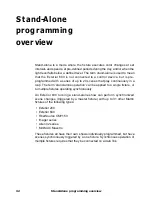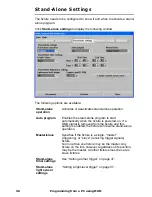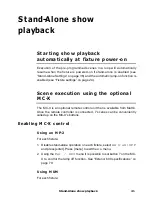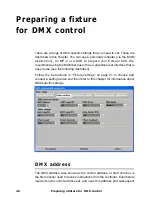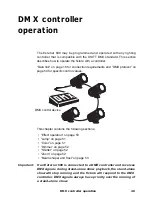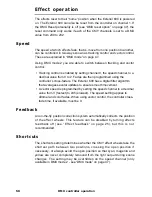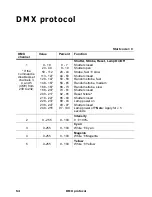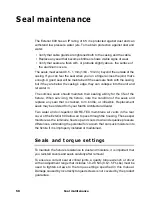
Synchronous triggering during Stand-Alone operation
43
Synchronous
triggering during
Stand-Alone
operation
Note
This chapter details the rules that are used in Stand-Alone
synchronous triggering. It is not necessary to read this chapter
unless you require help with problem diagnosis or unless you
otherwise need a detailed understanding of the algorithm used
for synchronous triggering.
The rules are as follows:
1. Every fixture can have up to 20 on-board scenes with individual fade and
wait times.
2. Scenes are numbered from 0 to 19.
3. A scene contains a fade-section, followed by a wait-section.
4. When running "synchronous triggering" one Exterior 600 issues
commands to the other Exterior 600s to "go to scene
xx
", where
xx
is the
scene number that the master will execute next.
5. If a slave has fewer scenes than the master, it will derive which scene to
go to by dividing the number of the scene it has been commanded to go
to (scene 5, for example) by the total number of scenes that the slave
fixture has (4, for example) in whole numbers (no decimal places). In this
example 5 divided by 4 results in 1, with 1 remainder. This remainder will
be the number of the scene that the slave fixture starts - scene 1.
Generally though, when a Slave fixture reaches its own last scene
before the Master fixture, a "go to scene
x
" message will result in the first
scene being played.
Содержание Exterior 600
Страница 1: ...Exterior 600 user manual m a r t i nar chi te ctu ra l ...
Страница 4: ...4 ...
Страница 30: ...30 General operation ...
Страница 56: ...56 DMX protocol ...
Страница 84: ...www martin architectural com Olof Palmes Allé 18 8200 Aarhus N Denmark Tel 45 8740 0000 Fax 45 8740 0010 ...




